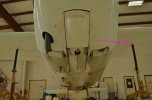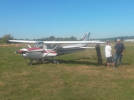I doubt they were seriously proficient with Cardinal emergency procedure ops. I've flown a BUNCH of different types of airplanes and you have to know what you're proficient in, and what you really aren't proficient in. If I have flown a plane a lot AND have practiced emergency ops, I might try something in that plane that I might not in another. It's definitely not the same to do that in the Super Cub as it is in the Cardinal. I've practiced return to the runway scenarios in my Luscombe and I think I've got a pretty good shot at that, but I personally don't think it's prudent in the RG with any sort of weight, or higher density altitude scenarios, and not below a personal minimum of 600' in ideal conditions with NO decent other options. I've been in RG's for about 500 hours per year for the better part of the last ten years and the ground track makes me uncomfortable. I think that there are places that it *might* work, but that terrain doesn't look like a place I'd try it.
As a few others have said, if they would've brought the prop back and left the gear up, they *might* have made it, but in that case, one of those fields earlier would've been a better choice, by far. The other thing is that people are waaaay too afraid of belly landings as a good survival option. I've had to do that once and now that I know what it's like, It's in my Swiss Army Knife list of emergency options. You can get a Cardinal stopped in about 500 feet of sliding on it's belly, and I'd bet it'd be survivable in a much short space even if you hit something soft-ish.
The aircraft experienced a gear-up landing at Abilene Regional Airport (KABI), Abilene, Texas after a hydraulic failure. The crew circled for approximately an hour trying to troubleshoot ...
aviation-safety.net


